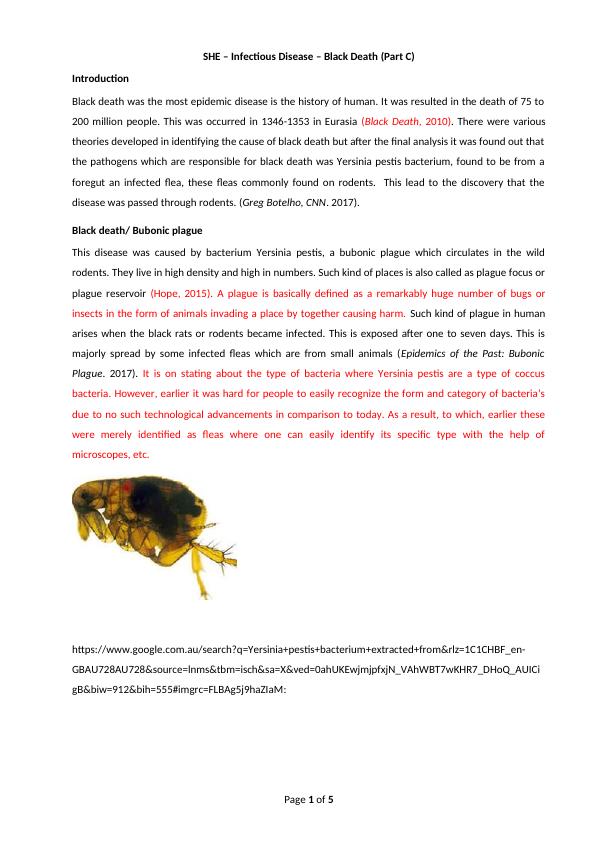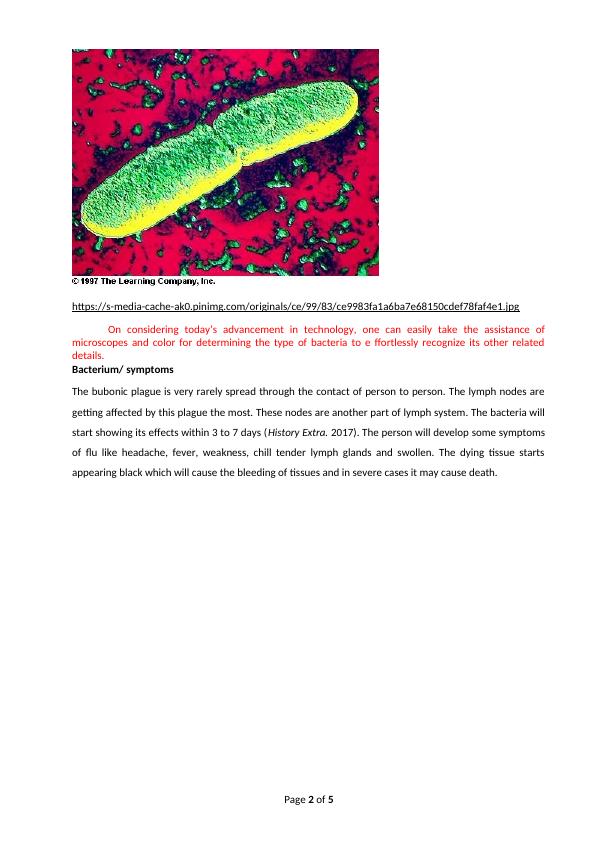Ask a question from expert
The History of Plague - Black Death
Investigate the wider effects of infectious disease on human health, including innovative treatments, ethical and social implications, and present findings as a scientific article or expert report.
5 Pages1694 Words141 Views
Added on 2020-06-05
The History of Plague - Black Death
Investigate the wider effects of infectious disease on human health, including innovative treatments, ethical and social implications, and present findings as a scientific article or expert report.
Added on 2020-06-05
BookmarkShareRelated Documents
End of preview
Want to access all the pages? Upload your documents or become a member.
Black Death: Symptoms, Transmission, and Treatment
|6
|1179
|106
Plague and People
|6
|1381
|236
World Health Organization 2017 Plague
|7
|1567
|23
Comparison of Onchocerciasis and Trachoma: Causes, Symptoms, and Prevention
|5
|1254
|446
Aging changes and sexually transmitted diseases
|17
|1232
|13
Diagnosis and Staging of Cancer
|7
|1747
|88

